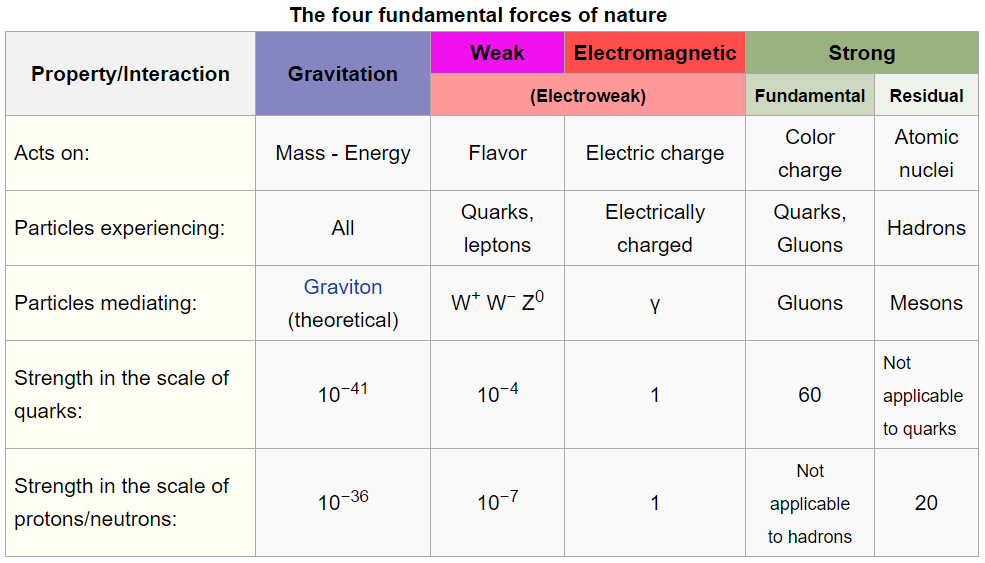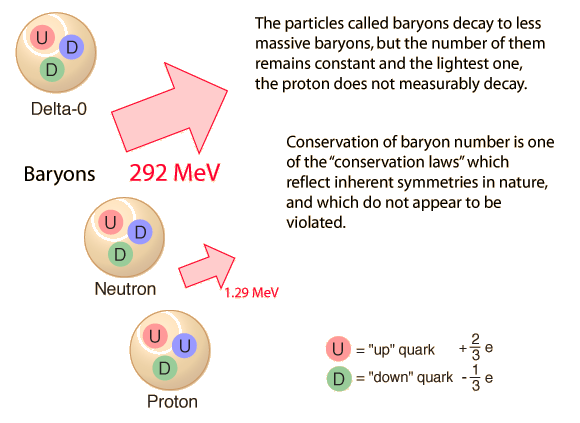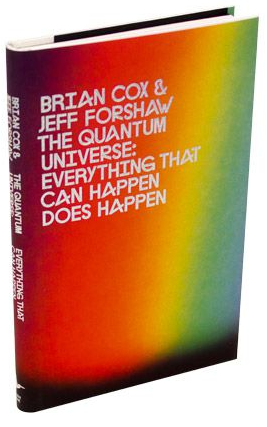
In the quantum world of elementary particles and fundamental forces, the general rule is “anything that can happen, will happen.”

However, some reasonable seeming processes actually are impossible, usually because of a conservation law. Particle interactions are used to discuss both exact and approximate conservation laws. In quantum physics, laws that once appeared to be exact may turn out to be approximate, and ordinary matter may turn out to be unstable in the very, very long run.
“Whatever can happen, eventually must happen” is a principle derived from Murphys Law by Mathematician Augustus De Morgan on June 23, 1866.

Particle physicists have adhered to this mindset when they observe the behavior of fundamental particles using nuclear reactors, particle accelerators, and cosmic rays. When particles interact; in collisions, in decay, and so forth lots of strange things happen in lots of different ways.
How do we figure out the rules of physics in a world where absolutely everything seems to happen? By looking for the things that never happen.
We can begin with a quick survey of some ideas in particle physics.

There are 4 basic forces in nature.
- The strong nuclear, or hadronic, force is the strongest of the 4 and has the shortest range. It binds the particles in a nucleus together.
- The electromagnetic force is about 100 times weaker than the strong nuclear force but has a range of whole galaxies. It is the basic force between atoms and molecules.
- The weak nuclear force is 1 trillion times weaker than the strong nuclear force and has an even shorter range. It is responsible for beta decay.
- Gravity is by far the weakest force, a trillion trillion (~1x 10^24) times weaker than the weak nuclear force. It has a huge range, however, holding solar systems and galaxies together. On the large scale, gravity is the important force in the universe. On the particle scale, it is negligible.
Each type of force has one or more associated particles. Besides the force-carrying particles there are,

- Baryons, the heavy particles found in nuclei.
- Mesons, unstable subatomic particles.
- Leptons, tiny particles such as electrons and neutrinos.
- Every sort of particle has an antiparticle twin.
Baryons and mesons are made of smaller particles called quarks.

Baryons are made of 3 quarks and mesons of 1 quark plus 1 antiquark. Every particle reaction happens because of the strong, weak, or electromagnetic force. Not every kind of particle is affected by every kind of force.
When a process is truly impossible, most often this is due to a conservation law.

Individual particles cannot just appear out of nowhere or disappear into nothing because of the conservation of energy. Electrons cannot decay into smaller neutral particles because of conservation of electric charge. Protons do not decay because of conservation of baryon number. This law sounds obscure, but it is one of the most significant facts of nature.
Reccomended Reading:

The Quantum Universe: Everything That Can Happen Does Happen) - ISBN 978-1846144325
by physicist Brian Cox and University of Manchester professor Jeff Forshaw
End Part 8
PART 1, PART 2, PART 3, PART 4, PART 5, PART 6, PART 7, PART 8
FOLLOW - @pjheinz
Image Credits:
https://pixabay.com/static/uploads/photo/2014/09/24/07/47/big-bang-458658_960_720.jpghttps://pixabay.com/static/uploads/photo/2014/09/29/18/30/big-bang-466309_960_720.jpghttps://upload.wikimedia.org/wikipedia/commons/thumb/c/cf/Augustus_De_Morgan.jpg/255px-Augustus_De_Morgan.jpghttps://en.wikipedia.org/wiki/Standard_Modelhttps://upload.wikimedia.org/wikipedia/commons/thumb/0/00/Standard_Model_of_Elementary_Particles.svg/563px-Standard_Model_of_Elementary_Particles.svg.pnghttps://upload.wikimedia.org/wikipedia/commons/thumb/e/e4/Hadron_colors.svg/255px-Hadron_colors.svg.pnghttp://hyperphysics.phy-astr.gsu.edu/hbase/astro/imgast/conbar.gifhttps://upload.wikimedia.org/wikipedia/en/2/2c/The_quantum_universe_-_bookcover.png
